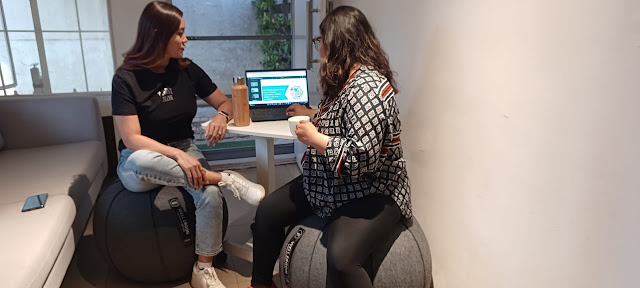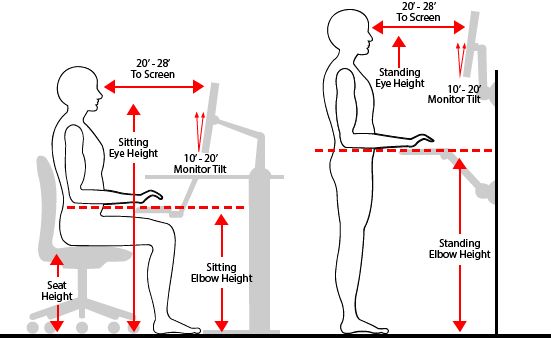The Future of Office Furniture: Collaborative Seating Solutions
The way we work and the environments in which we work have been rapidly evolving. The traditional office setup of isolated cubicles and rigid furniture is giving way to more flexible and collaborative workspaces. In this era of change, office furniture is playing a pivotal role in shaping the future of work. One of the most significant trends in office furniture design is the rise of collaborative seating solutions. In this blog, we'll explore the concept of collaborative seating and how it is reshaping the way we work, fostering creativity, and improving productivity.
The Shift from Traditional to Collaborative Workspaces
Gone are the days of the sterile, cubicle-centric office. Today's professionals are seeking more dynamic and interactive work environments that encourage teamwork, creativity, and flexibility. Collaborative seating solutions, often referred to as "collaborative furniture," address this need by offering a variety of seating options that promote interaction and adapt to different work styles.
The Essence of Collaborative Seating
Collaborative seating is more than just a trend; it's a fundamental shift in how we think about office design. It's about creating spaces where employees can collaborate, brainstorm, hold impromptu meetings, and work comfortably. It's a response to the changing nature of work, which is becoming increasingly collaborative, less hierarchical, and more project-based.
Let's dive into some of the key aspects of collaborative seating:
1. Versatility
Collaborative seating solutions are designed to be versatile and adaptable. They often include modular furniture that can be easily rearranged to suit different needs. This flexibility allows for a seamless transition from individual work to group collaboration without the need for a major furniture overhaul.
2. Comfort
Comfort is a non-negotiable aspect of collaborative seating. Whether it's ergonomic chairs, soft seating areas, or standing desks, comfort is prioritized to ensure that employees can focus on their tasks without the distraction of discomfort.
3. Creativity and Innovation
Collaborative seating fosters creativity and innovation by providing spaces where employees can brainstorm, exchange ideas, and think outside the box. These areas often feature bright colors, inspiring artwork, and unconventional furniture designs.
4. Mobility
Mobility is a defining feature of collaborative seating. Many collaborative furniture pieces are on wheels, making it easy to reconfigure the workspace as needed. This mobility allows teams to create impromptu meeting areas and adapt to different project requirements.
5. Interaction
Collaborative seating encourages interaction among team members. Whether it's through open workspaces, communal tables, or lounge areas, the layout promotes spontaneous conversations and knowledge sharing.
Benefits of Collaborative Seating
So, why are businesses and organizations adopting collaborative seating solutions with such enthusiasm? The answer lies in the numerous benefits that these designs bring to the table:
1. Enhanced Collaboration
Collaborative seating is designed to bring people together. It creates an environment where team members can easily collaborate, share ideas, and work together on projects. This leads to improved teamwork and better results.
2. Increased Productivity
When employees are comfortable and have the freedom to choose their working environment, they are more likely to be productive. Collaborative seating offers the flexibility to find the ideal setting for each task, which can lead to increased efficiency.
3. Flexibility and Adaptability
Businesses often undergo changes in their workspace requirements. Collaborative seating solutions can be easily reconfigured to accommodate these changes, whether it's expanding the team, rearranging the office, or creating new project spaces.
4. Improved Employee Satisfaction
A comfortable and engaging workspace contributes to higher employee satisfaction. When employees feel that their workspace caters to their needs and encourages interaction, they are more likely to enjoy their work and stay engaged.
5. Attraction and Retention of Talent
In today's competitive job market, attracting and retaining top talent is crucial. Offering a dynamic and collaborative workspace with modern seating options can be a significant draw for prospective employees.
6. Cost-Efficiency
The versatility and longevity of collaborative seating solutions can lead to cost savings over time. Instead of replacing furniture with every office redesign, companies can adapt their existing furniture to new layouts and styles.
Popular Collaborative Seating Options
Collaborative seating solutions come in various forms to cater to different work settings and preferences. Here are some popular options:
1. Open Workstations
Open workstations are designed to accommodate multiple employees in a shared space. They often feature low partitions or no partitions at all, promoting interaction and teamwork.
2. Lounge Areas
Lounge areas offer a relaxed and comfortable environment for informal meetings, brainstorming sessions, or individual work. They typically include sofas, armchairs, and coffee tables.
3. Communal Tables
Communal tables are large, shared tables that allow multiple employees to work side by side. They are ideal for collaborative projects and encourage interaction.
4. Standing Desks
Standing desks promote a healthier work style and can be easily incorporated into collaborative spaces. Employees can choose to work while standing or sitting, depending on their preference.
5. Huddle Rooms
Huddle rooms are small, private spaces designed for impromptu meetings and discussions. They are equipped with comfortable seating and technology for presentations and video conferences.
6. Mobile Whiteboards
Mobile whiteboards are essential tools for collaborative spaces, allowing teams to brainstorm, draw diagrams, and jot down ideas. They can be moved to different areas as needed.
The Future of Collaborative Seating
As the future of work continues to evolve, so will the concept of collaborative seating. Here are some insights into what the future might hold:
1. Integration of Technology
Collaborative seating will likely incorporate advanced technology, such as integrated charging stations, smart lighting, and interactive screens. These additions will further enhance the functionality of these spaces.
2. Personalization
Collaborative seating solutions may become more personalized, allowing employees to adjust their seating preferences, lighting, and workspace setup according to their individual needs.
3. Sustainable Design
Sustainability is an increasingly important consideration in office design. Collaborative seating solutions of the future may prioritize eco-friendly materials and energy-efficient features.
4. Health and Wellbeing
With an increased focus on employee health and well-being, future seating solutions may include ergonomic features and designs that promote physical activity and movement.
5. Remote Collaboration
As remote work becomes more prevalent, collaborative seating may extend beyond physical office spaces to include virtual collaboration tools and platforms.
Conclusion
Collaborative seating solutions are not just a passing trend; they represent a fundamental shift in the way we think about office design and the future of work. These innovative seating options are designed to enhance collaboration, productivity, and comfort while accommodating the evolving needs of the modern workforce.
As businesses and organizations continue to embrace these changes, the future of office furniture is one that adapts to the ever-changing landscape of work. Whether it's open workstations, lounge areas, communal tables, or huddle rooms, collaborative seating solutions are poised to play a central role in creating the workspaces of tomorrow.

.jpeg)





The shift toward agile, modular furniture clearly shows the future of office spaces; incorporating quiet zones alongside communal areas strikes a smart balance. Including ergonomic office chairs in collaborative setups would take it further, promoting comfort, posture, and long-term wellness during brainstorming or huddle sessions. Looking forward to seeing how ergonomic seating trends continue to evolve within these dynamic, hybrid layouts.
ReplyDelete